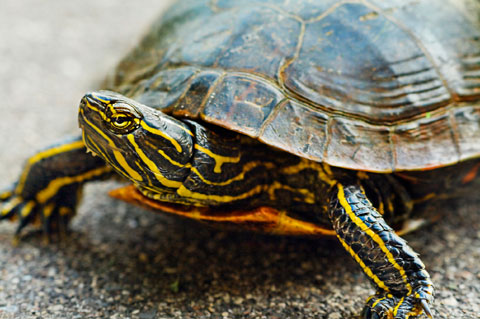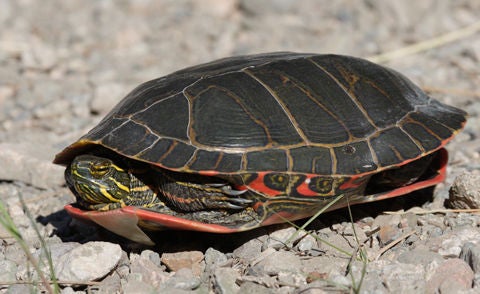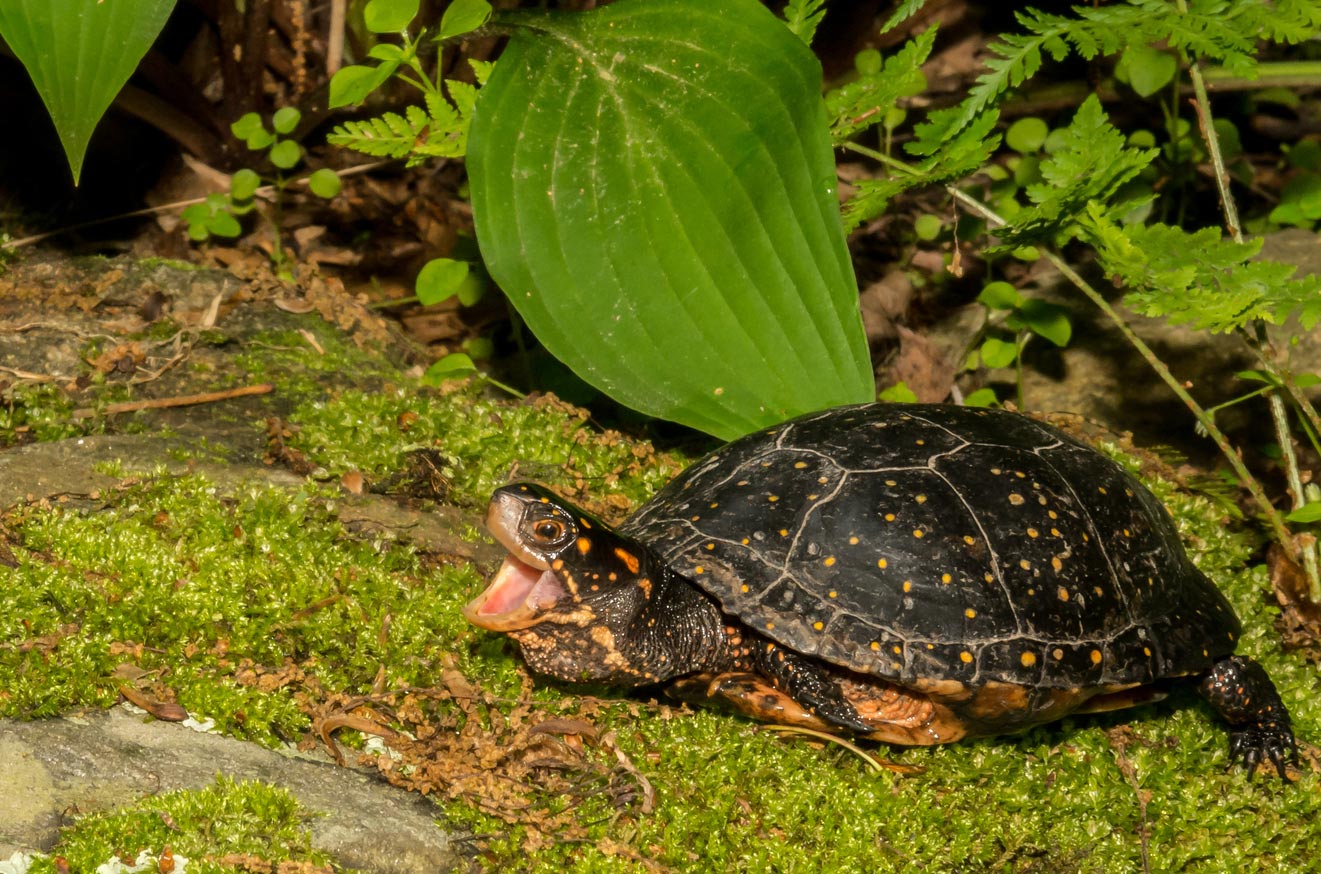
SCIENTIFIC NAME
Chrysemys picta
DESCRIPTION
The Painted Turtle has a smooth dark shell with red markings along the outside edge. Its dark skin is adorned with yellow and red strips, most prominently along the head and neck.
RANGE
Southern portions of provinces from British Columbia to Nova Scotia, but is absent from Prince Edward Island and Newfoundland
HABITAT
Painted Turtles live in shallow lakes, ponds, creeks and wetlands, preferring waterbodies with soft muddy bottoms and an abundance of aquatic vegetation. Females nest in open areas in sand, soil or gravel. In winter, Painted Turtles hibernate under water on the bottoms of wetlands.
DIET
BEHAVIOUR
undefinedPRIMARY ECOSYSTEM ROLES
- 0
- 1








